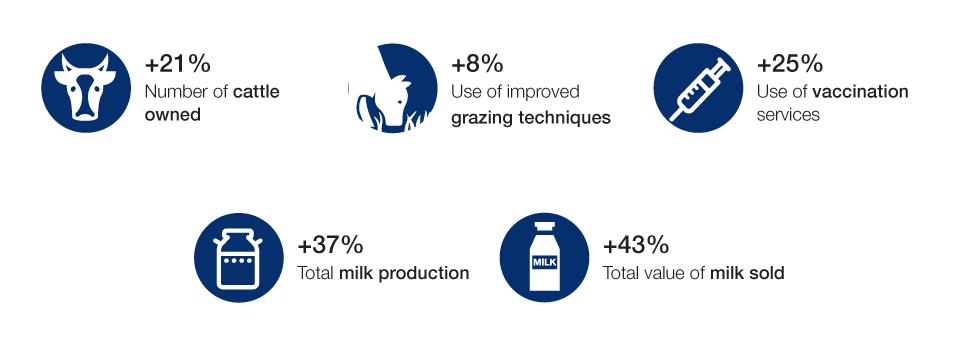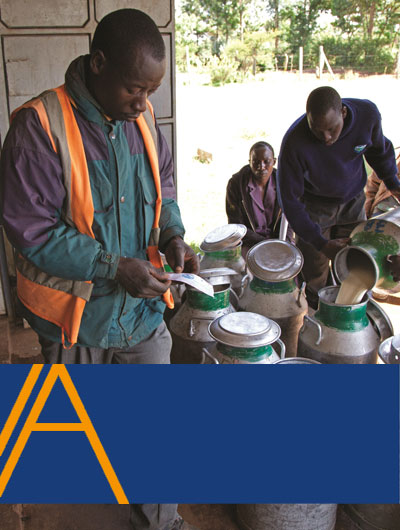Impact Assessment: Smallholder Dairy Commercialization Programme (SDCP)
Impact Assessment: Smallholder Dairy Commercialization Programme (SDCP)
The Smallholder Dairy Commercialization Programme (SDCP) aimed to foster market-driven development of the informal dairy sector in Kenya. The project worked with smallholder dairy farmers, mobile milk traders and small milk shop owners to increase their milk production, productivity and capacity to respond to market opportunities. Special attention was given to ensuring women's participation in the project, given their prominent role in dairy production in Kenya.
Through dairy farmers' groups, farmers were trained in organizational and enterprise skills, and received technical support for artificial insemination, fodder production and animal disease management to increase member farmers’ livestock breeds and improve their health. SDCP also included investment in market infrastructure such as milk-cooling facilities, road infrastructure and low-cost market information systems. This project underwent a rigorous impact assessment after its completion, using primary qualitative and quantitative data collected from 2,560 farmers.
Key Impact estimates
An impact estimate is calculated as the difference in mean outcomes between the treatment group (project participants) and the comparison group (non-participants).
SDCP achieved positive impacts on milk production and sales, as well as on animal feeding and care practices among participants, 60 per cent of whom were women. Key impact estimates include:

Main Lessons
A number of lessons from the impact assessment are relevant for future rural development policies and projects:
- Projects aiming to improve milk production and strengthen market linkages among smallholder dairy farmers should consider higher-per-litre prices rather than higher outputs as the main determinant of increased income. Given that milk is highly perishable, where farmers lack access to cold storage facilities, delivering milk to the market in a timely manner is critical for farmers to obtain higher prices.
- While training, field days and demonstrations provided to dairy group members on artificial insemination, fodder production and animal disease management increased the availability of such extension services, adoption rates among group members remained low. Investing in more frequent and in-depth training activities in future project designs would ensure higher adoption rates among dairy farmers.
- Even marginal improvements in access to markets resulted in higher returns for farmers. Special emphasis should therefore be placed on circulating market-related information and promoting group marketing, focusing on strengthening the link between group members, input suppliers and milk purchasers.
- Partnership and involvement with the private sector can contribute to increasing overall project impact. The private sector was instrumental in linking dairy groups to markets, specifically for marketing and technical support in milk-handling and facility management.
